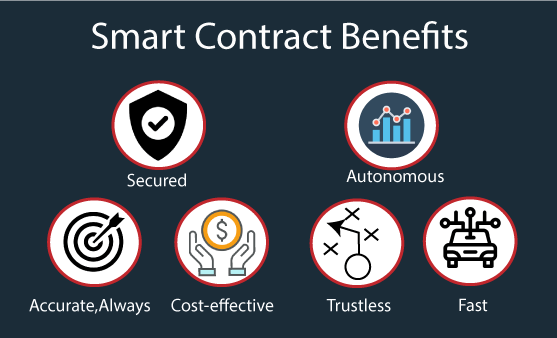What you need to know about NFTs smart contracts
What is a smart contract?
A smart contract is programming that exists within the blockchain that automatically enforces specific actions once predetermined conditions are met.
Smart contract enables the network to store the information that is indicated in an NFT transaction. Once done this information can be accessed when needed. The smart contract also ensures that the information stored is transparent as well as immutable.
Benefits of using smart contracts

Reliability: If a smart contract has been programmed correctly, difficulties in interpreting its terms are almost impossible. This circumstance also prevents the consequences of losing documents.
Security: They are highly secure and hard to hack - smart contracts are protected from hackers thanks to cryptographic encryption. Once a contract is signed, no one can change its terms.
Efficiency: the conclusion of a smart contract takes less time than usual. It saves partners time and money
Independence: Smart contracts give guarantees to third parties. Firstly, the immutable blockchain is used to verify the contract, and secondly, only the program code of the contract determines whether the terms of the contract are fulfilled.
How smart contracts & NFTs can interact with each other
.png)
Smart contracts can be embedded in an NFT to access and call assets in the NFT смарт контаркты встроены
The smart contract may allow the user to listen to the song embedded in an NFT. They both will use a smart contract to agree on the terms, pay the initial payment, and then access that purchased song. When consumers press the play button in their apps, that action continues in the background.
NFTs can be Embedded Within the Smart Contracts Themselves нфт встроены
The smart contract may contain an NFT that is distributed to the user or another contract based on the rules and events defined in the smart contract.
Users will be able to unlock a wide range of use cases by combining NFTs and smart contracts. It is important to create complex contractual frameworks and agreements
Standards of smart contracts for creating NFTs
.png)
The most popular non-fungible token standards on the Ethereum network are ERC-721 and ERC-1155.
ERC 721 Standard
This standard is used by many to create and launch NFTs. The main goal of ERC-721 is to register copyright ownership. ERC-721 requires all tokens to be non-fungible and to possess unique token IDs, a requirement that other standards may not enforce.
A proper NFT contract example would be how concert tickets work. They all look the same, but each has an ID, a unique barcode, and a serial number that makes it unique and non-fungible, making them harder to replicate.
ERC 1155 Standard
The ERC-1155 standard was created to accommodate both fungible assets like in-game currencies and non-fungible assets like limited edition skins.
With it, you can create and manage tokens of different standards in a single transaction. The only downside of ERC-1155 tokens is that they cannot record transaction history as the assets used in an ERC-1155 smart contract have their own transaction histories that are unrelated to ERC-1155.
Smart contracts are very versatile and can be customized to be applied to almost any industry. With NFTs and smart contracts, you can rest assured that your hard work doesn’t get pirated or distributed without the proper permission.
Topics
Recent comments
